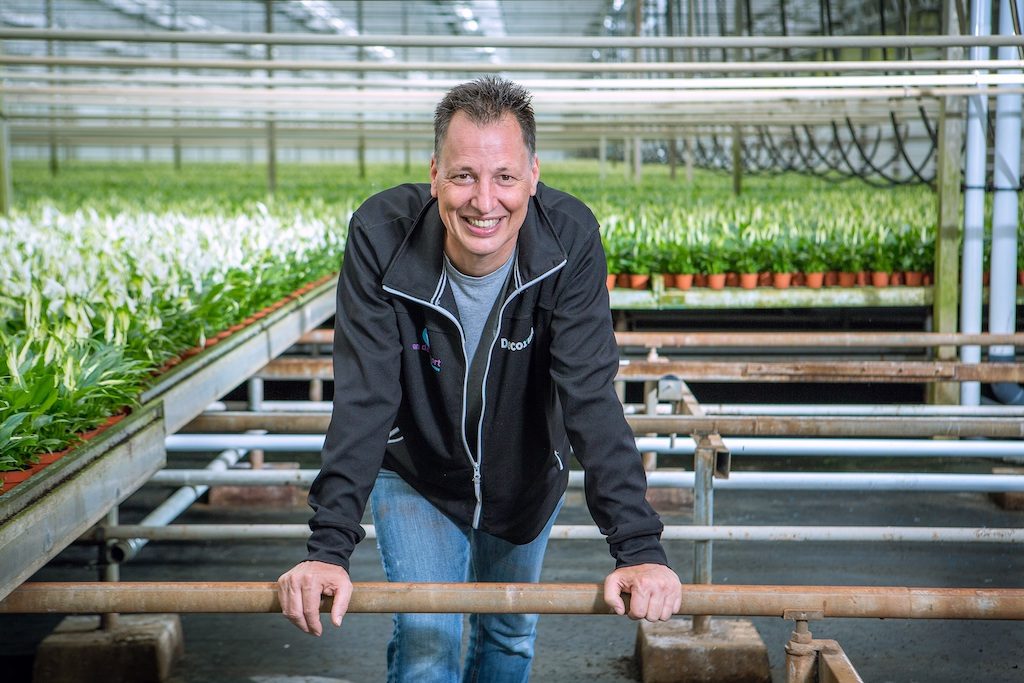Horticulture grower in the Netherlands enthusiastic about his geothermal heat supply
In an article shared by Trias Westland, a cooperation joint venture of various horticulture producers in the Netherlands, a grower talks about the challenges of implementing geothermal heating, yet also highlighting how important it is becoming for his business.
The challenge for growers who are connected to Trias Westland is to use the heat from the supplied geothermal water as much as possible. Pot plant grower Erwin Duijvestijn found a smart solution. Reason enough to ask general manager Erwin Duijvestijn about his experience of the past few months.
Van der Voort has been using geothermal energy from the source of Trias Westland, about a mile away in Naaldwijk, for almost two months. The fresh layer of asphalt on the Zwethlaan in Honselersdijk ‘betrays’ the presence of the underground heating network.
Two black pipes run across the adjacent ditch that drain and feed the warm water. In a production hall, general manager Erwin Duijvestijn proudly shows the installation with shiny piping and heat exchanger, which has been in operation since July.
The family business grows pot plants. The decorative spoon plant (Spathiphyllum) is the most important product. Around six hectares of greenhouses are filled with the characteristic plant with its elongated white cups. The spoon plant is popular for its air-purifying powers and travels all over the world from Westland, from seed to adult plant. The heat that should stimulate the growth of the spoon plants has recently come mainly from geothermal heat.
Duijvestijn, who has been working in horticulture from an early age, is enthusiastic about the use of sustainable heat from underground aquifers. “I see a new thinking arise in our industry. We expect a lot from this at our company. At present, geothermal heat is still a complicated puzzle. You can turn a CHP and a gas boiler on and off. Geothermal heat comes in 24 hours a day, all year round. You must therefore be able to control the system efficiently. We have just started, but we are getting better at it. After a year of running it will certainly go more smoothly. ”Van der Voort currently has a connection to the heat network with a capacity of 1.25 MW (comparable to 142 cubic meters of gas per hour). The company does not need to use natural gas in these warm months of the year. In the winter months, geothermal heat can cover around twenty percent of the heat supply, Duijvestijn predicts. “Geothermal heat is now number 1 for us. Our heat exchanger can even run up to 2.5 MW, so our options are not nearly limited. We can still make quite a few strokes. ”
Environmental efficiency
The challenge for Van der Voort, as well as for the 25 other growers in Trias Westland, is to extract as much heat as possible from the supplied geothermal water and to return water to the heat network as cold as possible. The water extracted from the deep subsurface is supplied to the growers at a temperature of 85 degrees. The return temperature is a requirement of 35 degrees. “Every degree that you get from that,” says Duijvestijn, “is pure profit. First of all, environmental efficiency. And the more heat we extract, the more SDE + subsidy Trias will receive, which is good for all of us. ”
Together with his installer, Van der Voort found a smart solution. The company tackled the internal heat network, which heats from under the tables with the growing spoon plants. “We have expanded the subnet with thicker pipes, a messy nine kilometers in total,” explains Duijvestijn. “We can now use the geothermal energy twice. First we feed the warm water through the new pipes and then again through the old thinner pipes. This way we are able to cool the water extra to 23 degrees, sometimes it even went to 22 degrees. We direct the cooled water back to the heat exchanger via a cascade. We want to prevent the water from entering the hot manifold of the installation. In that case it would heat up too much. The system works great, we now know for sure. The return temperature must be stable. In the long term, I expect, that will certainly succeed. ”Van der Voort expects to be able to get ten to fifteen percent more out of the geothermal energy utilization. “That is our ambition. We are a dynamic company that is fully investing. Our sector is on the move. A lot of new knowledge and technology is being added. Geothermal heat is such a beautiful and new theme that we are fully discovering.”
In December all existing participants of Trias Westland were asked about their interest in co-financing on the second doublet. There is good news to report! Sufficient interest has been shown for the financial participation in the development of the second doublet to start the legal elaboration. In June of this year financing was closed for the second doublet to be drilled, as we reported.
Source: Trias Westland


















